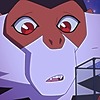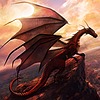HOME | DD
 MarvellousMemento — Eurusian Unicorn: Of Horn And Poison Cure
MarvellousMemento — Eurusian Unicorn: Of Horn And Poison Cure

#creaturedesign #fantasy #fantasycreature #worldbuilding #speculativeevolution #unicorn
Published: 2022-10-30 05:59:43 +0000 UTC; Views: 9860; Favourites: 184; Downloads: 0
Redirect to original
Description
The Eurusian Unicorn (Unicornus unicornus) is a pony-size creature that is endemic to the Eastern Alpine of Eurus. One of the two living species of unicorns in the world, with the other being the much larger Solregnian Unicorn (Monocerotherium solregnensis).
Despite their similarity to horses, unicorns are in fact an ancient lineage of rhino. With their teeth and feet that have 3 toes each being more similar to those of rhino's than horse's. The single horn atop their forehead is independently evolved from other clades of rhino, possessing a stubby, bony horn core to support the base of its extended keratinous part, which is like a mix between the horn of bovid and rhino.
The Eurusian species is a mountain dwelling that inhabits the grassy slope and plateau part of the alpine. They have tough hooves that allow them to walk effectively on sloped terrain. Their white to grey shaggy coat of fur is able to withstand the harsh temperature of the high altitude. They prefer a place with bushes and shrubs which they primarily feed on and also use as a cover to hide from predators. Being a shy and secretive animal, Eurusian unicorns travel in small groups usually no bigger than 10 animals, with the members being mostly females (known as dam) and their calves. Males (known as buck) typically live alone or in a small bachelor herd and would only join the female herd during mating season.
Eurusian unicorn is well known for their long, slender horn which in an older male could be as long as a metre in length. The horn serves little purpose such as attraction for females and jousting equipment when headbutting for the right to mate or asserting dominance within the herd. It is otherwise too fragile to be used as an actual weapon.
The Eurusian unicorn’s main predators are pumas, dholes and Northern Black Drake (Pachydraco borealis). They flee and hide as the main way to defend themselves, although biting with their sharp teeth has been recorded as a last resort effort as well. The biggest threat to the unicorns however are humans. Throughout many cultures, Eurusian unicorn’s horn is believed to be able to remove poison when one is dipped into food or drink. This belief likely came from unicorns that had been feeding on food plants contaminated by leaked arcane energy within their habitat, in which their horn actually can really remove poison. However, this way of removing poison is not reliable, and the majority of harvested horns do not possess such ability. Nonetheless, the belief has caused a severe problem to the unicorn as they were hunted excessively for their horn. Nowadays, only the populations of Wild North part of Eastern Alpine still remains, while their brethrens on Pensivior’s side has likely been all extirpated.
Related content
Comments: 6

👍: 0 ⏩: 1

👍: 1 ⏩: 0

👍: 0 ⏩: 1

👍: 0 ⏩: 0

👍: 1 ⏩: 1

👍: 1 ⏩: 0

















